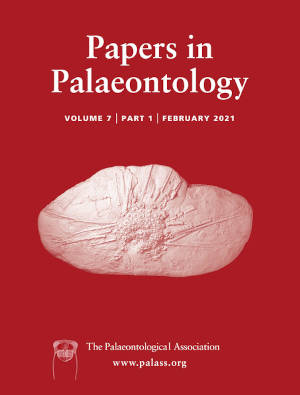Reg. Charity No. 1168330

Although first described in 1999, the early Cambrian Pectocaris remains a poorly known euarthropod genus. Two species, Pectocaris eurypetala and P. spatiosa, have been described from the Chengjiang biota. Here, we report a third species, Pectocaris inopinata sp. nov., which bears a pair of stalked eyes attached to an anterior sclerite, a pair of short but stout antennae, 29–35 cephalothoracic segments each corresponding to a pair of biramous appendages, 11–12 limbless segments carrying two rows of ventral spines and one row of dorsal spines, and a pair of broad telson flukes decorated with short marginal spines. Most strikingly, the endopods of anterior trunk appendages are each axially differentiated with two rows of setulose endites proximally and claw-like paired spines distally, in contrast to the endopods of posterior trunk appendages that carry two rows of setulose endites but lack claw-like paired spines. Phylogenetic analysis shows that P. inopinata, the other two Pectocaris species, together with their close relative Jugatacaris agilis belong to the same monophyletic clade. Our study reveals considerable differences in appendicular details and therefore presumably niche differentiation among Pectocaris and Jugatacaris species, as well as some other bivalved euarthropods in the Cambrian with similar overall appearances.